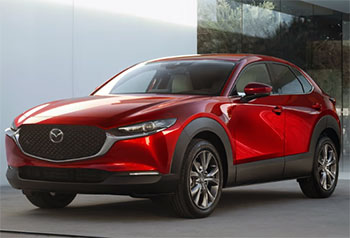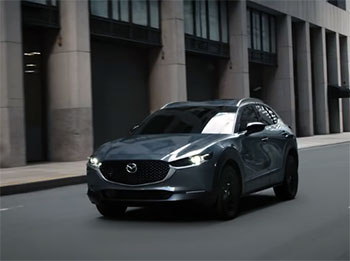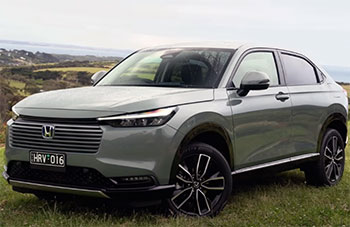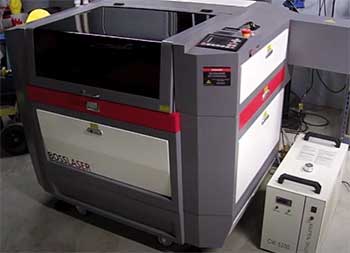I’ve always had a soft spot for subcompact SUVs—they’re versatile, stylish, and just the right size for zipping through city traffic or hitting the open road for a weekend adventure. After spending quality time behind the wheel of the 2025 Mazda CX-30 and Honda HR-V, I’m here to share my real-world experience comparing these two crowd favorites.
My goal is to help you figure out which SUV fits your life, whether you’re after a sporty thrill or practical comfort. Through a detailed comparison table, in-depth pros and cons, and answers to common questions, I’ll unpack what makes each vehicle stand out and where they miss the mark, all from my perspective as a driver.
Comparison Table: Mazda CX-30 vs. Honda HR-V
| Feature | Mazda CX-30 (2025) | Honda HR-V (2025) |
|---|---|---|
| Starting Price | $26,415 | $26,795 |
| Engine Options | 2.5L 4-cylinder (191 hp), 2.5L turbo (250 hp) | 2.0L 4-cylinder (158 hp) |
| Transmission | 6-speed automatic | Continuously Variable Transmission (CVT) |
| Drivetrain | Standard AWD | FWD standard, AWD optional |
| Fuel Economy (Combined) | 26-29 MPG | 27-28 MPG |
| Cargo Space (Seats Up) | 20.2 cu.ft. | 24.4 cu.ft. |
| Passenger Volume | 94.1 cu.ft. | 98.7 cu.ft. |
| Infotainment Screen | 8.8-inch (non-touch), 10.25-inch on turbo | 7-inch or 9-inch touchscreen |
| Safety Rating | IIHS Top Safety Pick+, NHTSA 5-star | IIHS Top Safety Pick, NHTSA 5-star |
| Warranty | 3 years/36,000 miles | 3 years/36,000 miles |
My Experience With the Mazda CX-30

The moment I slid into the driver’s seat of the 2025 Mazda CX-30, I felt like I was in for something special.
The exterior, with its sleek curves and bold front grille, had a premium vibe that made it stand out in a crowded parking lot.
It’s the kind of vehicle that feels like it’s trying to be more than just a practical SUV—it wants to be fun.
I tested both the base 2.5-liter 4-cylinder engine, pumping out 191 horsepower, and the turbocharged version, which delivers a punchy 250 horsepower with premium fuel.
The difference between the two was night and day, but both made me smile.
The CX-30’s standard all-wheel drive (AWD) gave me confidence on a rainy day, gripping the road with ease as I navigated slick city streets. The six-speed automatic transmission shifted smoothly, with none of the hesitation I’ve felt in other compact SUVs.
Mazda’s focus on driving dynamics shone through—the steering was sharp, and the CX-30 hugged corners with minimal body roll, making my commute feel like a mini road rally. I took it on a winding backroad, and it handled like a sporty hatchback, not a tall SUV.
Inside, the cabin felt like a step above its price point. Soft-touch materials, a clean layout, and optional leather-trimmed seats gave it a near-luxury feel. The 8.8-inch infotainment screen (10.25-inch on turbo models) was crisp, but I wasn’t thrilled about the rotary knob control—it took me a few days to get the hang of it.
The front seats were supportive for long drives, but the rear legroom (36.3 inches) felt snug when I had taller friends in the back. Cargo space, at 20.2 cubic feet with seats up, was enough for groceries or a weekend bag, but I had to get creative when packing for a group trip.
Safety features were a highlight. The i-Activsense suite, standard on all trims, includes adaptive cruise control, lane-keep assist, and automatic emergency braking. The optional 360-degree camera and traffic-jam assist made city driving a breeze, especially in tight parking lots.
The CX-30 earned an IIHS Top Safety Pick+ and a 5-star NHTSA rating, which gave me peace of mind. However, the firm suspension made potholes more noticeable than I’d like, and highway noise crept into the cabin at higher speeds. Fuel economy was respectable at 26-29 MPG combined for the base engine, but the turbo dropped to 25 MPG, which I felt at the pump.
Overall, the CX-30 won me over with its sporty soul and polished interior. It’s not perfect—rear space and ride comfort could improve—but it’s a blast to drive, and that counts for a lot in my book.
Read More: My Thoughts On BMW X7 Vs. Cadillac Escalade
Pros of the Mazda CX-30
- Sporty Performance: The CX-30’s base 2.5-liter engine delivers 191 horsepower, easily outpacing the HR-V’s 158 horsepower. The turbo option, with 250 horsepower, is a game-changer, hitting 60 mph in about 6.4 seconds. I felt the rush merging onto highways, and the six-speed automatic shifted with precision, making every drive engaging.
- Standard All-Wheel Drive: AWD comes standard, a rarity in this class. During a rainy test drive, the CX-30 stayed glued to the road, giving me confidence in less-than-ideal conditions. It’s a big plus for anyone in wet or snowy climates.
- Premium Interior: The cabin feels like it belongs in a higher price bracket. Soft-touch surfaces, a driver-centric layout, and optional leather seats create a refined vibe. The 12-speaker Bose audio system (available on higher trims) turned my commute into a concert hall.
- Advanced Safety Features: Mazda’s i-Activsense suite is standard, with adaptive cruise control, blind-spot monitoring, and lane-keep assist. The optional 360-degree camera and traffic-jam assist were lifesavers in city traffic, making parking and low-speed driving stress-free.
- Sleek Design: The CX-30’s exterior, with its flowing lines and bold grille, looks sophisticated. The new Aero Gray color caught eyes everywhere I went, and the LED headlights added a modern touch.
- Nimble Handling: The CX-30 feels like a sports car in SUV clothing. Precise steering and minimal body roll made twisty roads a joy. I looked forward to every corner, which isn’t something I say about most SUVs.
- Customization Options: With multiple trims and the turbo engine, the CX-30 lets you tailor it to your needs. I loved the flexibility to choose between efficiency and power, something the HR-V lacks.
The CX-30’s blend of performance and style made it feel like a treat to drive. The turbo engine’s power was addictive, and the AWD handled everything I threw at it. The interior’s upscale feel was a standout, though the rotary infotainment knob took some patience. For anyone who loves driving, the CX-30 delivers an experience that’s hard to match in this segment.
Cons of the Mazda CX-30

- Cramped Rear Legroom: The rear seats offer just 36.3 inches of legroom, noticeably less than the HR-V’s 37.7 inches. When I had friends over 6 feet tall in the back, they complained about feeling squeezed, especially on longer drives.
- Limited Cargo Space: With 20.2 cubic feet behind the rear seats, the CX-30 trails the HR-V’s 24.4 cubic feet. Packing for a weekend trip with friends meant stacking bags carefully, and I wished for more room.
- Firm Ride Quality: The sporty suspension, while great for handling, makes the ride stiff over rough roads. Potholes and uneven pavement were more jarring than I expected, which could be a dealbreaker for comfort-focused buyers.
- Non-Touch Infotainment: The 8.8-inch screen relies on a rotary knob, which felt clunky compared to a touchscreen. Adjusting settings while driving was distracting, and I missed the simplicity of tapping the screen.
- Higher Price on Upper Trims: The base CX-30 starts at $26,415, but turbo models can climb past $36,000. That’s significantly more than the HR-V’s top trim at $30,195, which might stretch budgets.
- Mediocre Fuel Economy: The base engine gets 26-29 MPG combined, slightly behind the HR-V. The turbo engine’s 25 MPG felt pricey during my week of mixed driving, especially with premium fuel.
- Cabin Noise: At highway speeds, road and wind noise crept into the cabin more than I’d like. It wasn’t unbearable, but it made long drives less serene compared to the quieter HR-V.
The CX-30’s sporty nature comes at a cost. The tight rear seating and cargo area were limiting for group outings, and the firm ride made me wince over rough roads. The infotainment system and higher price tag on upper trims could frustrate some buyers. Still, these drawbacks didn’t fully dim the CX-30’s shine for me.
My Experience With the Honda HR-V

The 2025 Honda HR-V welcomed me with a sense of familiarity and practicality.
Built on the Honda Civic platform, its exterior is clean and modern, blending into urban settings without drawing too much attention.
The cabin was a pleasant surprise—spacious, functional, and designed with the driver in mind. With 98.7 cubic feet of passenger volume and 24.4 cubic feet of cargo space, it felt like a mini van in disguise, perfect for errands or road trips with friends.
The HR-V’s 2.0-liter 4-cylinder engine, producing 158 horsepower, paired with a continuously variable transmission (CVT) was smooth but uninspiring.
It took about 9.5 seconds to hit 60 mph, which felt sluggish when merging onto highways.
I tested the optional AWD (front-wheel drive is standard), and it handled light rain well, though I wished AWD was included across all trims like the CX-30. The ride was comfortable, soaking up bumps better than the CX-30, and the cabin stayed remarkably quiet at highway speeds.
The infotainment system, with a 7-inch touchscreen standard and a 9-inch option on higher trims, was a breeze to use.
Wireless Apple CarPlay and Android Auto on the EX-L trim made connecting my phone effortless. The Honda Sensing safety suite, including adaptive cruise control and automatic emergency braking, worked flawlessly, though I was annoyed that blind-spot monitoring was exclusive to higher trims.
The HR-V’s IIHS Top Safety Pick and 5-star NHTSA rating reassured me, but I wanted more standard safety tech.
Fuel economy averaged 27-28 MPG combined, a slight edge over the CX-30’s base engine, and I hit 35 MPG on a highway stretch, which was a nice surprise. The HR-V’s “magic seats” added versatility, letting me configure the rear seats for tall or bulky items. While it didn’t excite me like the CX-30, the HR-V felt like a trusty sidekick, prioritizing space and comfort over thrills. For practical buyers, it’s a no-brainer.
Pros of the Honda HR-V
- Roomy Interior: The HR-V’s 98.7 cubic feet of passenger volume and 37.7 inches of rear legroom made it feel airy. I comfortably fit three adults in the back for a short trip, and no one complained about space.
- Ample Cargo Space: With 24.4 cubic feet behind the rear seats (55.1 cubic feet with seats folded), the HR-V swallowed groceries, sports gear, and luggage with ease. The “magic seats” let me carry tall items like a floor lamp without hassle.
- Smooth Ride: The HR-V’s suspension handled rough roads better than the CX-30. I barely noticed small bumps during city drives, making it a great choice for daily commutes or long trips.
- Intuitive Infotainment: The 7-inch or 9-inch touchscreen was responsive and user-friendly. Wireless smartphone integration on higher trims simplified my setup, and the interface felt modern and straightforward.
- Solid Fuel Economy: Averaging 27-28 MPG combined, the HR-V slightly outperformed the CX-30’s base engine. On a highway trip, I hit 35 MPG, which helped stretch my fuel budget.
- Competitive Pricing: Starting at $26,795, the HR-V is slightly cheaper than the CX-30, and the top EX-L trim at $30,195 offers strong value for its features, especially compared to pricier CX-30 trims.
- Quiet Cabin: The HR-V’s cabin stayed hushed at highway speeds, making conversations and music more enjoyable. It felt more serene than the CX-30 on long drives.
The HR-V’s practicality was its biggest strength. The spacious interior and cargo area made it ideal for families or anyone needing extra room. The smooth ride and efficient engine kept things stress-free, and the touchscreen infotainment was a joy to use. For buyers who value utility and comfort, the HR-V is a standout.
Cons of the Honda HR-V
- Underpowered Engine: The 2.0-liter engine’s 158 horsepower felt lackluster, especially on highways. The CVT was smooth but didn’t mask the lack of pep, making overtaking a chore.
- Front-Wheel Drive Standard: Unlike the CX-30’s standard AWD, the HR-V’s FWD is standard, with AWD an extra-cost option. This was noticeable in wet conditions, where I felt less grip.
- Limited Safety Features on Base Trim: The Honda Sensing suite is standard, but blind-spot monitoring and rear cross-traffic alerts are exclusive to higher trims. I expected more safety tech at the base level.
- Basic Interior Materials: The cabin uses harder plastics than the CX-30’s upscale materials. While durable, it felt less luxurious, especially on lower trims.
- Single Engine Option: The HR-V offers only one engine, unlike the CX-30’s base and turbo choices. I wished for a more powerful option for spirited driving.
- No Hybrid Available: Unlike competitors like the Toyota Corolla Cross, the HR-V lacks a hybrid option. With fuel prices creeping up, I missed the potential for better efficiency.
- Less Engaging Drive: The HR-V prioritizes comfort over excitement. It felt competent but never thrilling, lacking the CX-30’s sporty handling and responsive steering.
The HR-V’s lack of power was its biggest letdown, especially compared to the CX-30’s lively engines. The absence of standard AWD and limited safety features on the base trim were frustrating, and the interior felt functional but not special. While it’s a practical choice, it didn’t spark the same joy as the CX-30.
Read More: My Thoughts On Ford Escape Vs. Mazda CX-5
Frequently Asked Questions (FAQ)
The CX-30’s main weaknesses are its limited rear legroom (36.3 inches), smaller cargo space (20.2 cubic feet), and firm ride, which can feel harsh on rough roads. The non-touch infotainment system also feels dated.
The HR-V’s primary drawbacks are its underpowered 158-horsepower engine, lack of standard AWD, and basic interior materials. Some safety features, like blind-spot monitoring, are reserved for higher trims.
The CX-30 is comparable to subcompact SUVs like the Honda HR-V, Subaru Crosstrek, Kia Seltos, and Hyundai Kona, offering a blend of sporty handling and premium features.
The CX-30’s popularity stems from its sporty performance, upscale interior, standard AWD, and sleek design, appealing to drivers seeking a fun, refined subcompact SUV.
Conclusion: For the Mazda CX-30 and Honda HR-V
You’re at a crossroads, and I get it—choosing between the Mazda CX-30 and Honda HR-V isn’t easy. If you’re like me and love a vehicle that makes driving fun, the CX-30 is your pick. Its sporty engines, standard AWD, and premium interior make every trip an adventure, even if you’ll deal with less rear space and a firmer ride. If you need a practical, dependable SUV, the HR-V’s roomy cabin, generous cargo space, and smooth ride are hard to beat, though it lacks the CX-30’s excitement. Test-drive both to see which one feels like home—you’ll know when you hit the road.

